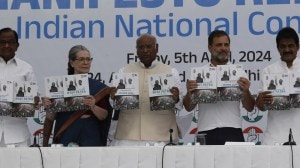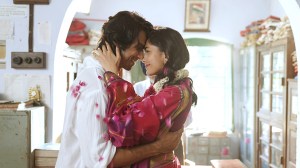- India
- International
Anyone can wear a phanek: lessons from the canvas of a Manipuri artist
From trendy phaneks that “anyone can wear” to brides who are “too loud”, Manipuri artist Thokchom Sony’s paintings defy convention, one bold stroke at a time
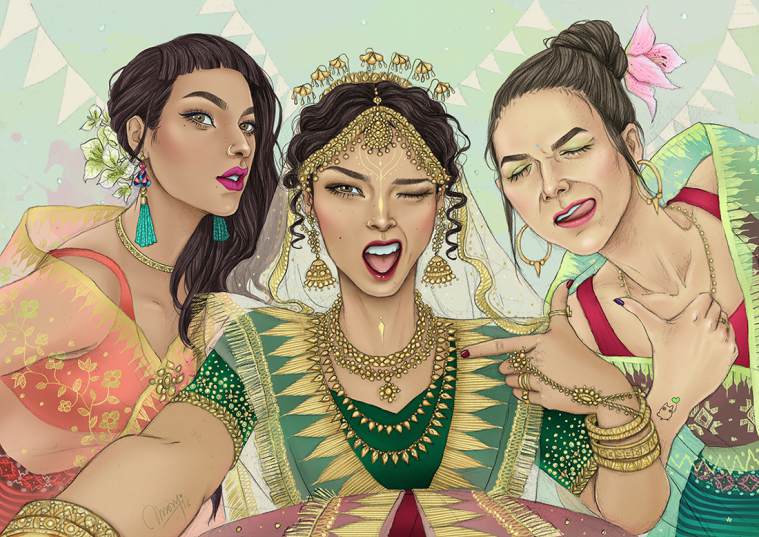 ‘Wedding of my BFF’ by artist Thokchom Sony depicts a Manipuri bride and her two friends. The artist received some criticism because the bride seemed ‘too loud’ and not ‘demure enough’.
‘Wedding of my BFF’ by artist Thokchom Sony depicts a Manipuri bride and her two friends. The artist received some criticism because the bride seemed ‘too loud’ and not ‘demure enough’.
Of the many learnings within Tea Break, a painting by Manipuri artist Thokchom Sony, is a sartorial one: “that anyone can wear a phanek.”
The phanek, a traditional loin cloth worn by women in Manipur, especially of the Meitei community, is wrapped around like a sarong — an item of daily clothing for the older generation, but relegated to “special occasions” for younger women.
In Sony’s painting, two young women — one with rigid curls, the other with poker straight hair — are wearing this seemingly complicated attire with envious aplomb. The phaneks, although a little modified, are draped around their jackets. “I’ve tried to give it a contemporary touch — I want people to know that the phanek can be worn by everybody,” 30-year-old Sony says.
It is possible that the subjects in Tea Break are products of a cosmopolitan society — strong, independent women, exactly the kind Sony likes creating through his art. In one, Little Indian Ballerinas, three little girls prance across the canvas in tutus with traditional Manipuri motifs, and in another, Shoot Love No Bullets, a woman totes a gun that isn’t shooting bullets but a shower of wildflowers.
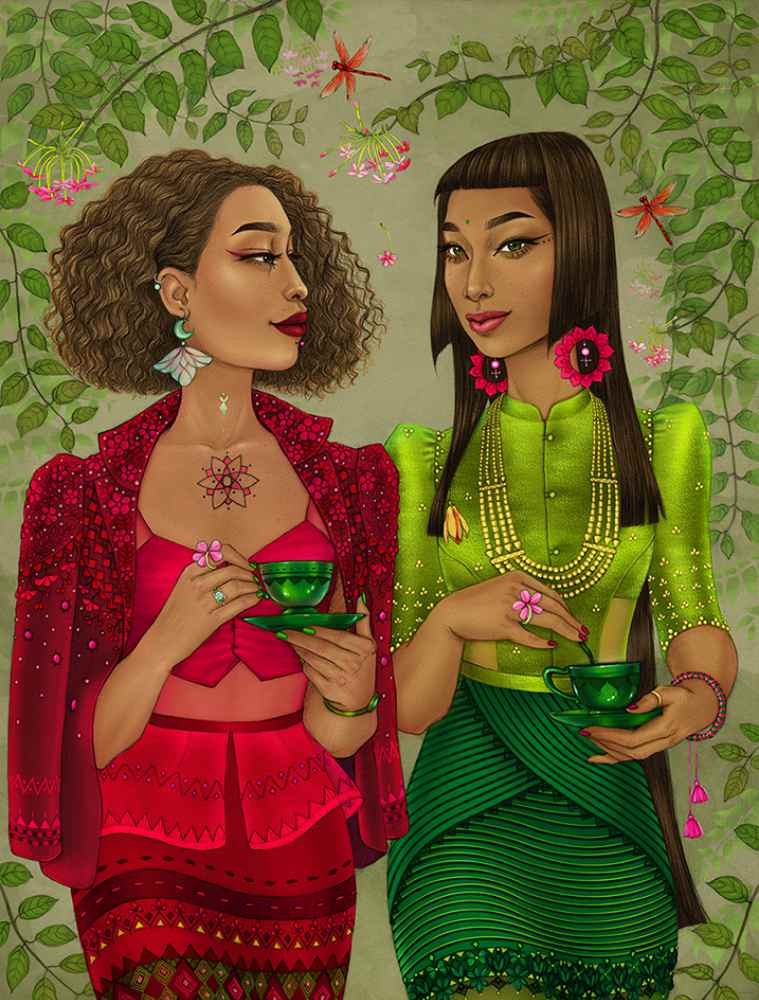 ‘Tea Break’ by Thokchom Sony.
‘Tea Break’ by Thokchom Sony.
“Back home, in Manipur, women might be independent but they do not have much freedom. For example, the Ima Keithel, believed to be the largest all-women market in Asia, is celebrated and often symbolic of how strong Manipuri women are. But I have seen how things are back home — women are always controlled,” says Sony.

Ever since he started painting professionally in 2015 (a consequence of a “burn out from a nine-to-five job”), these are narratives the artist has strived to change: stereotypes about race and gender, myths about culture, conventional notions of beauty, and so on.
Sony, who is a faculty member at the Jamia Millia Islamia is now showing his works — along with another Manipuri artist Meena Laishram — in an ongoing exhibition “Khongool” (meaning ‘footprints’ in Meitei) at Gallery Onkaf in New Delhi. The title is a metaphor for the artists’ journey from Manipur to Delhi. And for Sony, it has been a long one — almost twelve years in the making.
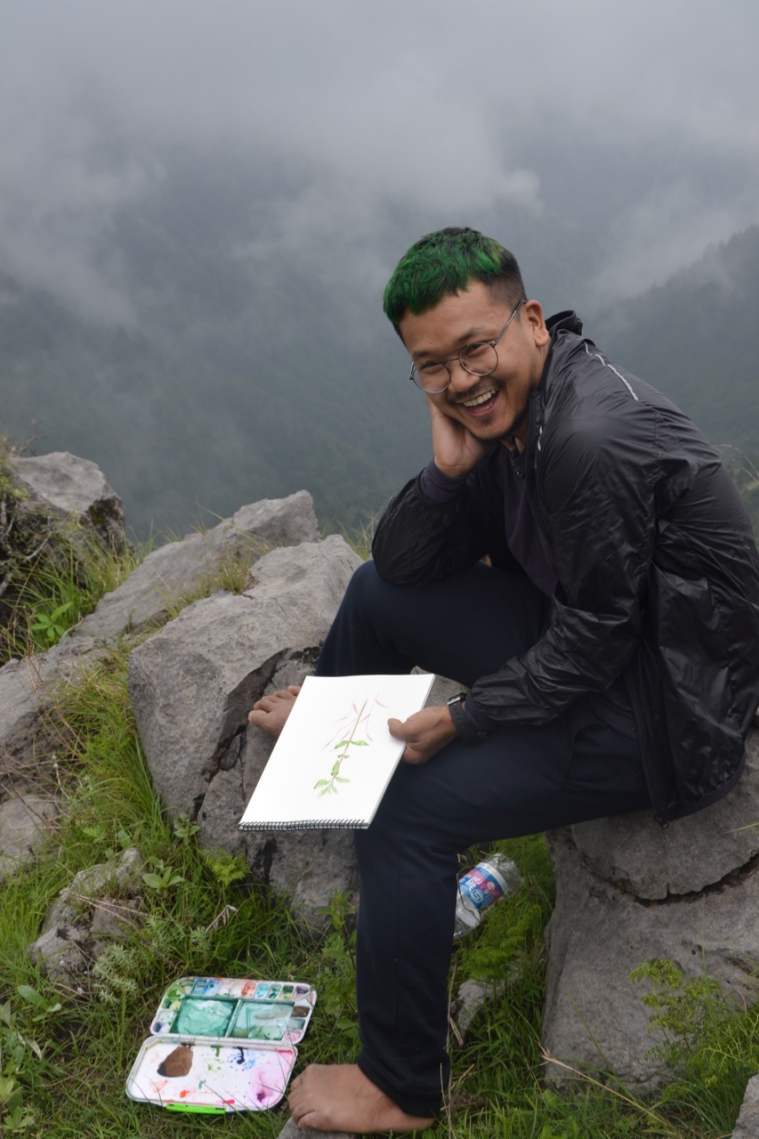 30-year-old artist Thokchom Sony grew up in Imphal. Photo Courtesy Thokchom Sony
30-year-old artist Thokchom Sony grew up in Imphal. Photo Courtesy Thokchom Sony
Growing up in Imphal, he left his hometown in 2007 to pursue fine arts in Delhi — a decision that needed much courage for someone like him. “It was very challenging to make my parents understand what I really wanted to do,” he says, “In such fields, we don’t have much scope back home neither do we have anyone to look up to.”
Yet the proverbial plunge led him to live more than a decade in Delhi — a place he now calls his second home, but also a place where he, especially as someone hailing from the northeast, “sometimes feels invisible”.
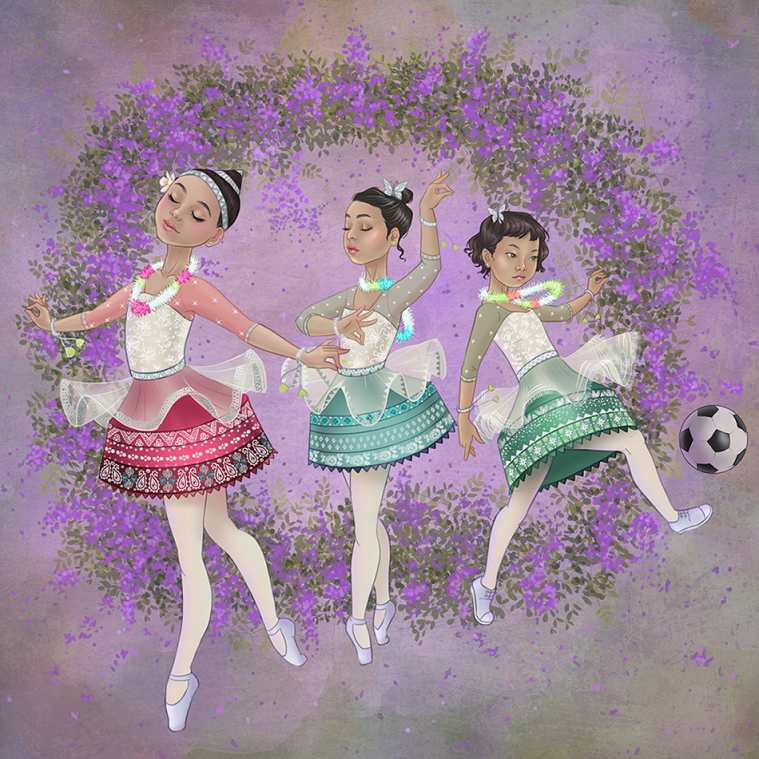 In ‘Little Indian Ballerinas’ by Thokchom Sony, three little girls prance across the canvas in tutus with traditional Manipuri motifs.
In ‘Little Indian Ballerinas’ by Thokchom Sony, three little girls prance across the canvas in tutus with traditional Manipuri motifs.
In his art, he represents this by painting wildflowers, a metaphor for being invisible.
“People don’t look at them properly, but if you look closer, the intricate details on these flowers and grasses are hard to miss. I feel it’s the same with cultures — every culture has something to offer if we try to look at it closely,” he says. “I want people in the mainstream to be aware of the different ethnicities that exist in the northeast.”
To achieve his goal of bringing the region to the ‘mainstream’, Sony is not only using northeastern elements in his works — often in costume and colour (liberal use of green: “I miss how green everything in the northeast is.”) — but his characters have facial features that are a mix of European, African and Oriental.
“Today people are traveling and are exposed to various cultures. I have seen a lot of northeastern women marrying outside their communities. I find it really interesting when people mix and learn about other cultures, which is why my portraits have diverse features,” he says.
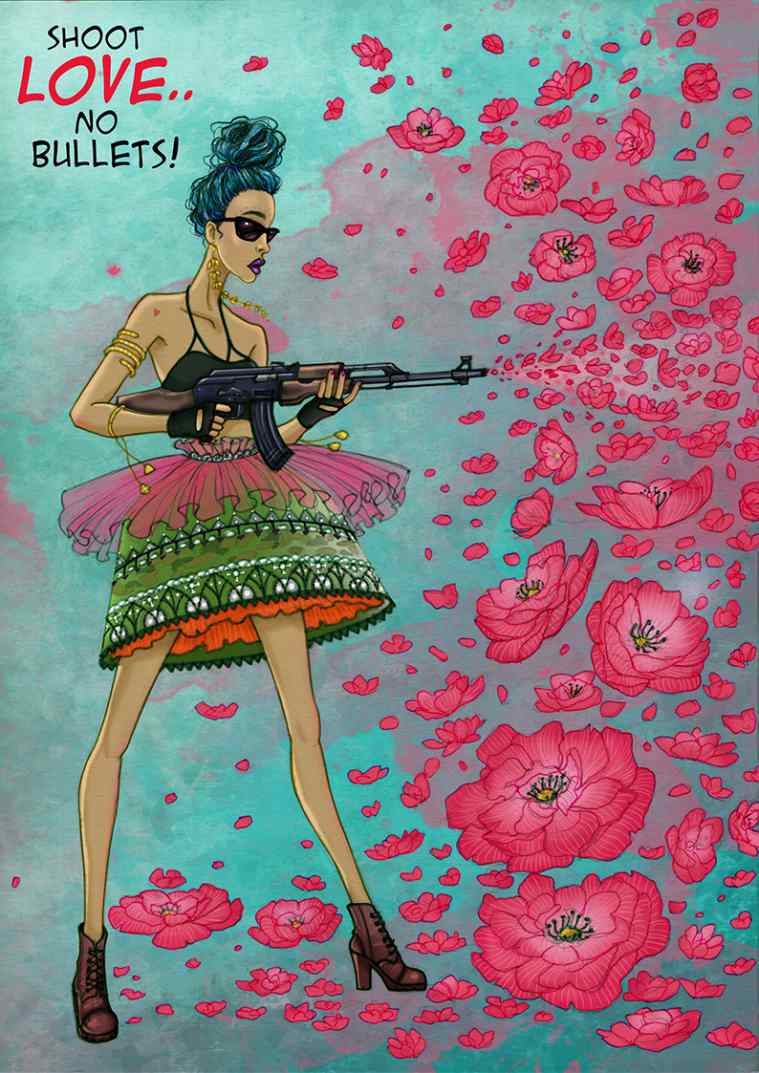 ‘Shoot Love No Bullets’ by Thokchom Sony has a woman toting a gun that isn’t shooting bullets but a shower of wildflowers.
‘Shoot Love No Bullets’ by Thokchom Sony has a woman toting a gun that isn’t shooting bullets but a shower of wildflowers.
While in Delhi, many appreciate his art, there are paintings that have a raised an eyebrow or two back home in Imphal.
One of his earlier works, Wedding of my BFF, depicts a Manipuri bride who has traveled the world and is back home to celebrate her wedding. She is seen taking a selfie with a couple of her friends who are from North India. All are dressed in traditional Manipuri attires. “A lot of people appreciated this but back home, I faced a lot of criticism because apparently the bride seemed ‘too loud’ and not ‘demure’ enough,” he says. The bride can be seen winking in the painting.
Undaunted by such comments, Sony continues to paint on his canvas — he is now working on a series on people from the northeast who live in metropolitan cities. “My sense of style is a bit outrageous — I think my art reflects my personality as well,” he says.
The author is a Guwahati-based freelance journalist. She tweets at @without_sans.
Apr 25: Latest News
- 01
- 02
- 03
- 04
- 05

















